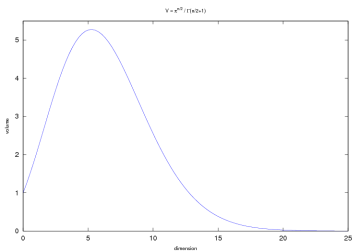Friday, February 6. 2009
Ö1 Digital.Leben: Wie Digicams Gesichter erkennen

Es ist immer spannend, wenn das, womit man sich (z.B. beruflich) einhergehend beschäftigt, beginnt, sich allmählich in der Gesellschaft niederzuschlagen, vor allem wenn die Entwicklung zuvor von der Öffentlichkeit unbeobachtet in „Elfenbeintürmen“ (Labors, Forschungs- & Entwicklungsabteilungen, Uni-Instituten udgl.) stattgefunden hat. Es ist nämlich damit zu rechnen, dass Anwendersoftware bald in der Lage ist, Bild- und Videoinhalte tatsächlich auch zu sehen. So wäre etwa zu erwarten, dass in jüngerer Zukunft nach dem Hochladen eines Bildes in einem einschlägigen Webportal vorgeschlagen wird, das Bild z.B. mit den Schlagworten „Auto“, „rot“, „Straße“ oder „Strand“, „Meer“, „Küste“ zu versehen, sofern eine einschlägige Szene abgebildet ist.
Was bereits Realität ist, sind lernfähige Gesichtserkennungsfunktionen in aktuellen Digitalkameras und Bildverwaltungsanwendungen. Mit den technischen Hintergründen dieser nun Alltag gewordenen Funktion beschäftigte sich die gestrige Ö1-Sendung „Digital.Leben“.
Maschinelles Sehen
[...] Wir Menschen können Gesichter ganz gut anhand von winzigen Details unterscheiden, wie aber macht das ein Computer? Die Antwort weiß Horst Bischof, Professor für maschinelles Sehen an der Technischen Universität Graz.
Ich erlaube mir, hier eine Kopie des Podcasts zur Verfügung zu stellen:
Mehr zum Thema wird für die Ö1-Sendung „Matrix“ am Sonntag, 8. Februar, 22:30h angekündigt.
Sunday, January 11. 2009
Magic ball volumes in high-dimensional spaces

Currently I’m dealing with the topic of machine learning at work, and I stepped over the so-called curse of dimensionality, where the volume of the unit ball (radius=1) becomes negligible compared to the volume of the unit cube (side length=1) which is always equal to 1, what yields problems when selecting a number of training samples in a (very) high-dimensional feature space. My team-mate and I stepped over an interesting thing concerning the volume of the unit ball in higher dimensions.
First of all, the formula for calculating the volume of the ball Brn ⊂ ℝn with radius r is given as
.
In two dimensions (n=2) we get the volume as the well-known circle area r2π, and as Γ(2.5)=¾√π, we get the ball volume for n=3 as 4⁄3r3π. In higher dimensions the resulting formula isn’t that simple anymore, but we’re only interested in the numerical values anyway. We now restrict to r=1. Following one’s intuition, the volume increases with the dimensions (ball volume is larger than circle area), but see what happens beginning with n=5 and n=13:
| n | V | n | V |
|---|---|---|---|
| 1 | 2 | 11 | 1.88 |
| 2 | π ≈ 3.14 | 12 | 1.34 |
| 3 | 4⁄3π ≈ 4.19 | 13 | 0.91 |
| 4 | 4.93 | 14 | 0.60 |
| 5 | 5.26 | 15 | 0.38 |
| 6 | 5.17 | 16 | 0.24 |
| 7 | 4.72 | 17 | 0.14 |
| 8 | 4.06 | 18 | 0.08 |
| 9 | 3.30 | 19 | 0.05 |
| 10 | 2.55 | 20 | 0.03 |
This is indeed interesting: The ball volume starts to decrease and even goes to zero in higher dimensions, although its radius is always 1! What does that mean? And why is the unit cube able to keep its volume of 1, although it seems to be contained within the unit ball? Another thing we see: A bit past n=5 the function reaches its maximum of something a bit larger than 5. Do we have V(x0)=x0 for x0=sup V(x)? And if so, what’s its value?
The key in understanding this issue lies in the corners of the unit cube: Their distance to the origin goes to infinity with increasing number of dimensions! For the unit square (2-cube), their distance is √½ ≈ 0.71, and for the 3-cube it’s already √¾ ≈ 0.87. At n=4 their distance is √1=1 and thus the corners already touch the unit ball. In higher dimensions the unit cube is not completely contained within the unit ball anymore, but still its volume is constant =1 and the nearest points of the sides remain at a distance of ½!
Regarding the question about where the maximum of the volume formula is reached, I noticed that I’d need to do advanced numerical derivations whose knowledge I lack.
Monday, December 22. 2008
Obviousity FAIL

Monday, December 1. 2008
Pack die Motorsäge aus

Saturday, October 4. 2008
Ökostrom vs. Naturstrom

Für unsere neue Unterkunft hab ich überlegt, ob wir nicht auf einen ökologischen Stromanbieter setzen wollen, um Kernkraft, Großwasserkraftwerken und der übermäßigen CO2-Produktion kalorischer Kraftwerke eine Abfuhr zu erteilen und gezielt erneuerbare Energien zu fördern.
„Ökostrom vs. Naturstrom“? Was soll denn diese gekünstelte Polarisierung? Nun, eine kurze Recherche offenbart zwar, dass Naturstromprodukte von den ehemaligen Strommonopolisten im Endeffekt nur Halbwahrheiten sind, da das Geld ja ohnehin unabhängig vom gewählten Produkt an den Großanbieter fließt, der damit macht, was ihm passt, u.a. eben auch die Investition in nicht-ökologische Stromproduktion. Aber mit dem Titel dieses Artikels will ich etwas anderes aufzeigen, nämlich die Konkurrenz zwischen den (dediziert) ökologischen Stromanbietern.
In Österreich gibt es zwei davon: Die Oekostrom AG und die AAE Naturstrom Vertrieb GmbH. Beide haben das „Österreichische Umweltzeichen“ für mindestens eines ihrer Produkte erhalten. Gute Frage also, wer von den beiden der optimale wäre. In Wikipedia und an anderen Stellen im Web ist die Rede davon, dass AAE von Greenpeace, GLOBAL 2000 und dem WWF empfohlen sei. Die Aussagen werden aber offenbar immer von derselben Person getätigt, was aus dem Namen bzw. den Initialen hervorgeht, und offensichtlich betreibt diese Person auch eine Photovoltaikanlage in Oberösterreich, die – no na – die AAE beliefert. Und Quellen für diese Aussagen habe ich auch keine gefunden. Klar, unter den Referenzen der AAE sind so klingende Namen wie Greenpeace, Die Umweltberatung, Die Grünen oder Sonnentor, aber GLOBAL 2000 und WWF tauchen nun mal in den Referenzen der Oekostrom AG auf. Und keine der bekannten Umweltorganisationen erwähnt bevorzugt nur einen der Anbieter, sondern stets beide gleichberechtigt.
Continue reading "Ökostrom vs. Naturstrom"
Sunday, September 14. 2008
RottenSupermarket.com

 In Anspielung auf RottenNeighbor.com. Allerdings gibt’s die im Titel genannte Domain noch garnicht. Sollte wohl geändert werden. Das Bild habe ich jedenfalls nicht irgendwo im Ostblock aufgenommen oder in den USA, sondern in Wien.
In Anspielung auf RottenNeighbor.com. Allerdings gibt’s die im Titel genannte Domain noch garnicht. Sollte wohl geändert werden. Das Bild habe ich jedenfalls nicht irgendwo im Ostblock aufgenommen oder in den USA, sondern in Wien. Wednesday, September 10. 2008
Nur für Physiker lustig

Saturday, July 26. 2008
Déjà-vu

 Irgendwie kommt mir das bekannt vor. Entdeckt am 21. Juli 2008 im Interspar im Trillerpark, Floridsdorf. Außerdem ein Witz: Die einzige Apfelsorte aus Österreich war Golden Delicious. Die anderen kamen aus Frankreich, Holland und Südafrika!
Irgendwie kommt mir das bekannt vor. Entdeckt am 21. Juli 2008 im Interspar im Trillerpark, Floridsdorf. Außerdem ein Witz: Die einzige Apfelsorte aus Österreich war Golden Delicious. Die anderen kamen aus Frankreich, Holland und Südafrika! About
Calendar
| Mon | Tue | Wed | Thu | Fri | Sat | Sun |
|---|---|---|---|---|---|---|
| ← Back | December '25 | Forward → | ||||
| 1 | 2 | 3 | 4 | 5 | 6 | 7 |
| 8 | 9 | 10 | 11 | 12 | 13 | 14 |
| 15 | 16 | 17 | 18 | 19 | 20 | 21 |
| 22 | 23 | 24 | 25 | 26 | 27 | 28 |
| 29 | 30 | 31 | ||||



